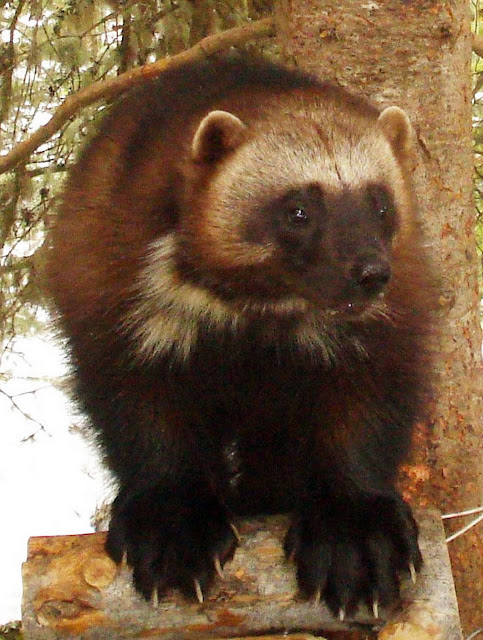A grizzly bear (not the one pictured) and cubs were chased by a large group of wolverines in the Teton Wilderness.
NPS Photo / Mary Lewandowski
There’s not much that can send a grizzly bear running scared — especially not a mother with cubs in tow — but a nature guide recently witnessed just that, and it’s only the second most surprising thing he saw that day. As many as 13 wolverines were gathered, chasing a grizzly and three cubs across the steep, rugged terrain of the Grand Tetons, according to an Oct. 2 Facebook post by ecotourism agency Yellowstone Insight.
Doug MacCartney snapped pictures of the distant figures rushing through a band of snow on Aug. 8, the post said. The action was a few hundred yards east of the route MacCartney and two fellow hikers were taking to reach their destination in the Teton Wilderness, the post said. The wolverines trickled into MacCartney’s view. He spotted the first on a large rock, dashing down from its overlook in pursuit of the bear, then joined by a second, then a third, followed by a mother and two kits, the post said.
Wolverines are compact but ferocious, standing about 1.5 feet in height, and typically weighing anywhere between 17 to 40 pounds. Still, they’re the largest land-dwelling member of the weasel family and are known to be cunning, strong for their size and more than willing to put up a fight. Their claws and teeth help too.
This undated image provided by the U.S. Fish and Wildlife Service shows a wolverine, a snow-loving predator sometimes called the “mountain devil.” AP
“It looked like the wolverines were chasing the bears for quite a while,” according to MacCartney. “But when the bears took an easier route out of the bowl along a rocky ledge, the growing group of wolverines went up” to the right, while another group broke left, trying to surround the bears on both sides. While the bears navigated the rough terrain well, the smaller wolverines continually outmaneuvered them, MacCartney said. “It was very hard for us to keep track of all of the wolverines and the bears as they fled the area,” MacCartney said, according to the post, but he’s confident there were at least 12 of them in total.
Wolverines are rarely seen. They’re generally solitary animals and their population in the contiguous 48 states is estimated around 400 or fewer, according to wildlife experts. Others say there could be as few as 25 wolverines in the contiguous U.S. They don’t reproduce much, and they require a lot of space, with home ranges varying from 100 to 600 square miles, preferring high elevations. To see one wolverine, much less a dozen or more in the same area, all apparently working together against a bear and cubs, flies in the face of most documented behavior for the species.
“We couldn’t believe what we had just seen,” MacCartney said. “We were all pumped up and in awe by what we had just witnessed.” Shared food sources — army cutworm moths and white bark pine nuts — could be responsible for drawing so many wolverines and the bears to the same location, Jeff Copeland, founder of The Wolverine Foundation, told Yellowstone Insight. But the pictures suggest that wolverines may not be as solitary as they’re thought to be. “With that said, 12-13 wolverines seen at the same time, on the same mountain, congregated together is quite unbelievably phenomenal,” Yellowstone Insight said.
Recommend this post and follow
The Life of Earth





No comments:
Post a Comment
Stick to the subject, NO religion, or Party politics